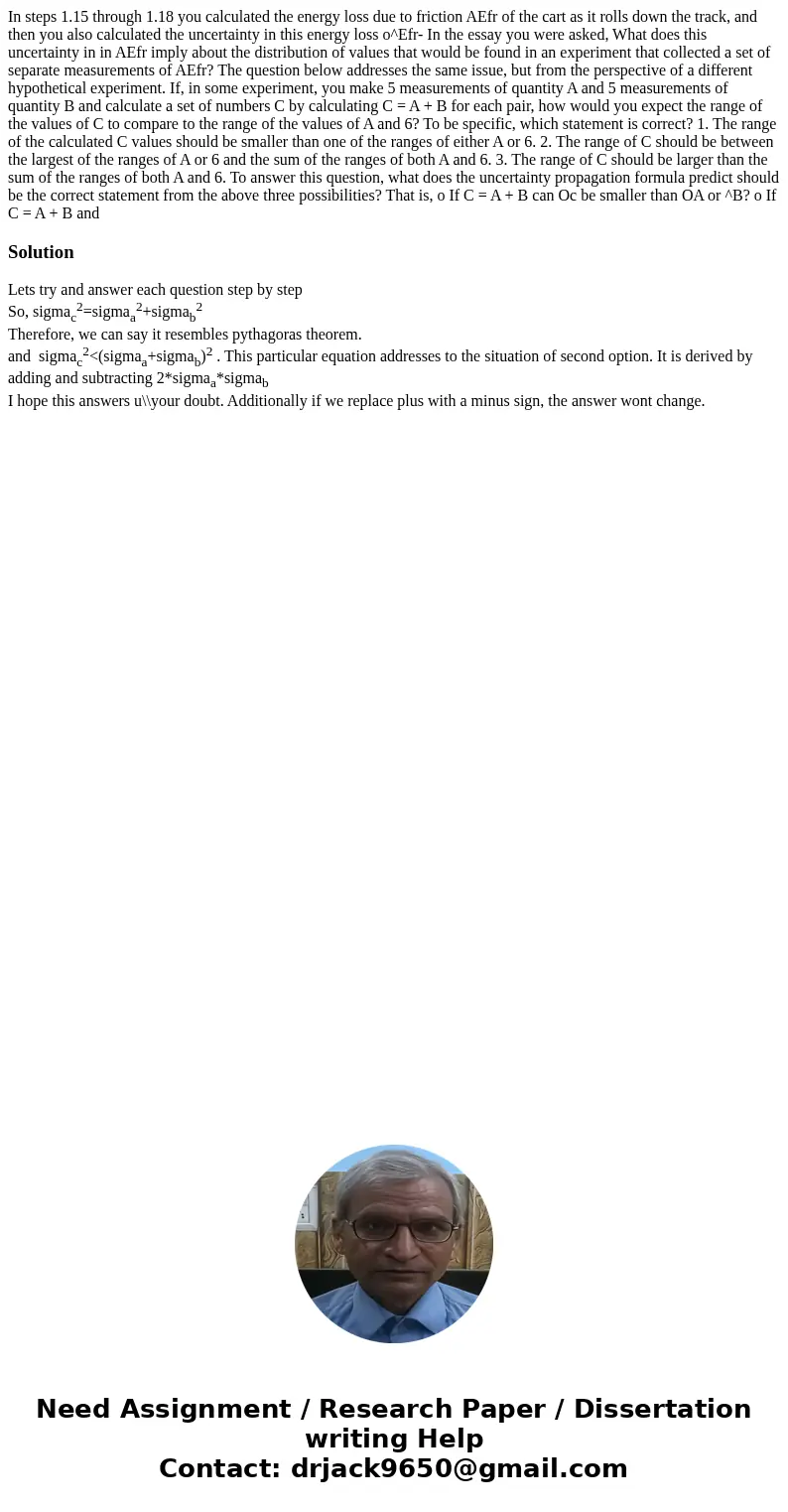In steps 115 through 118 you calculated the energy loss due
In steps 1.15 through 1.18 you calculated the energy loss due to friction AEfr of the cart as it rolls down the track, and then you also calculated the uncertainty in this energy loss o^Efr- In the essay you were asked, What does this uncertainty in in AEfr imply about the distribution of values that would be found in an experiment that collected a set of separate measurements of AEfr? The question below addresses the same issue, but from the perspective of a different hypothetical experiment. If, in some experiment, you make 5 measurements of quantity A and 5 measurements of quantity B and calculate a set of numbers C by calculating C = A + B for each pair, how would you expect the range of the values of C to compare to the range of the values of A and 6? To be specific, which statement is correct? 1. The range of the calculated C values should be smaller than one of the ranges of either A or 6. 2. The range of C should be between the largest of the ranges of A or 6 and the sum of the ranges of both A and 6. 3. The range of C should be larger than the sum of the ranges of both A and 6. To answer this question, what does the uncertainty propagation formula predict should be the correct statement from the above three possibilities? That is, o If C = A + B can Oc be smaller than OA or ^B? o If C = A + B and 
Solution
Lets try and answer each question step by step
So, sigmac2=sigmaa2+sigmab2
Therefore, we can say it resembles pythagoras theorem.
and sigmac2<(sigmaa+sigmab)2 . This particular equation addresses to the situation of second option. It is derived by adding and subtracting 2*sigmaa*sigmab
I hope this answers u\\your doubt. Additionally if we replace plus with a minus sign, the answer wont change.

 Homework Sourse
Homework Sourse